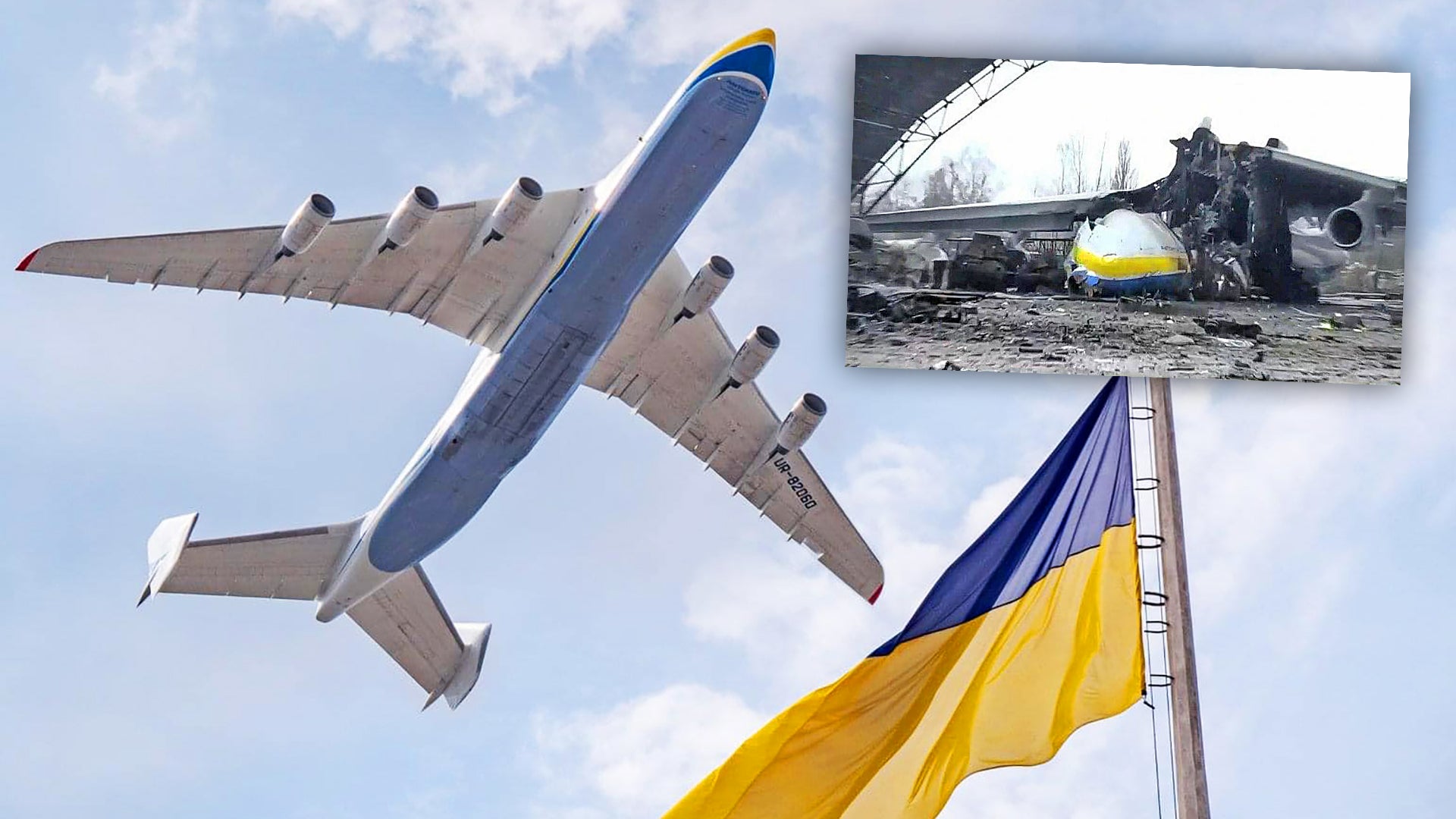The destruction of the An-225 Mriya (“Dream”) one-of-a-kind cargo jet, the largest on Earth, during the recent fighting at Ukraine’s Hostomel Airport, outside Kyiv, looked likely to put an end to the six-engined giant. However, designer and manufacturer Antonov has other ideas and has put out a call for international supporters willing to pledge funds in an effort to revive the An-225 in one form or another.
Launching the appeal with a statement on the Ukrainian company’s Facebook page, Antonov CEO Serhiy Bychkov, said:
“Dear citizens of all countries of the world! Among all transport aircraft, the An-225 Mriya aircraft of the Antonov State Enterprise occupies a special place — the largest in terms of cargo volumes and unsurpassed in its parameters… Despite these hard times, the Antonov team are resolute in their belief that the irreversible loss of the legendary aircraft as one of the symbols of modernity cannot be allowed and that work must start on the revival of the flagship transport aircraft, An-225 Mriya… We propose to establish an International Fund.”

The CEO’s statement, which we have translated, reflects on the An-225’s 30 years of successful operation prior to the conflict, including its ability to transport oversized cargo and the 240 world records that it set. As well as moving civilian and humanitarian payloads, Bychkov points to the An-225’s potential to move more exotic payloads atop its fuselage and to launch spacecraft and missiles in flight.
The ambitious crowd-funding proposal seeks support from “heads of states and governments of all countries, global aviation producers; foreign partner companies that participated in the creation of aircraft and other Antonov products and supplied their products for the serial production of Antonov aircraft, management of banks and other financial institutions; aviation fans and enthusiasts, the world aviation community, and all people concerned who admired the greatness of the Ukrainian Mriya.”
The statement ends with assorted bank account details into which funds can be transferred.
How much money Antonov is looking for is not made immediately clear, although Ukraine’s state news agency, Ukrinform, claims that restoration of the aircraft will cost more than $3 billion. This seems quite high, but maybe that includes modernization of the design and the ability to produce the aircraft in a serial production form.
“Restoration,” however, seems an entirely fanciful prospect, at least based on what was left of the original completed aircraft after the assault on Hostomel late last month. Video taken in the wake of the fighting there shows that the aircraft was largely destroyed, with its nose, wings, and some of its engines badly damaged. All that appeared to remain intact were parts of the empennage, but the condition of this is likely questionable, too.

With that in mind, it seems far more likely that Antonov aims to use the funds to help complete the remaining unfinished An-225 fuselage, thought to be at the manufacturer’s assembly facility in Kyiv, and perhaps using undamaged parts from the wreck at Hostomel.
Alternatively, the manufacturer may harbor hopes of building an entirely new An-225, although the status and condition of the tooling in Kyiv are currently uncertain. Resuming production of the An-225 is something that has been considered in the not-too-distant past, however, with China reportedly having offered Antonov cash to put an updated version of the aircraft into production with Antonov’s help. Ultimately, these plans came to nothing, but the unique capabilities of the An-225 do at least mean there is a demand for an aircraft in this class and there is likely to be no shortage of clients that would look to use it again in the future — if that becomes possible.

Whatever the plan, and should Antonov secure the funds it needs, Ukraine would likely have to defeat Russia, or at least bring the current conflict to a broadly peaceful conclusion before it can even start to consider embarking on a project of this kind.
However, there is no doubt that the loss of this iconic aircraft has taken on a certain symbolic value for the conflict as a whole. Its dramatic demise is something that Ukrainian officials have leveraged already and the incident prompted a significant international reaction. Ukraine, in general, will need much rebuilding after the fighting is over, and there are clearly higher priorities than rebuilding an airplane, but getting the An-225 back in the air could act as a great symbol for the country and there may be a business case for it, as well.
While it’s clear that Ukraine at large currently has far more pressing concerns, the ‘dream’ of returning the An-225 to the skies has at least been embraced by Antonov, and aviation fans and enthusiasts around the world will surely get behind the project, too.
Contact the author: thomas@thedrive.com
